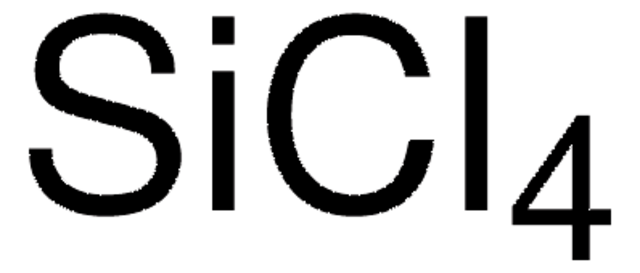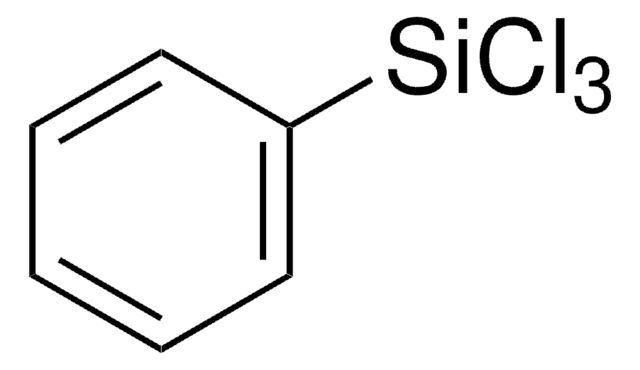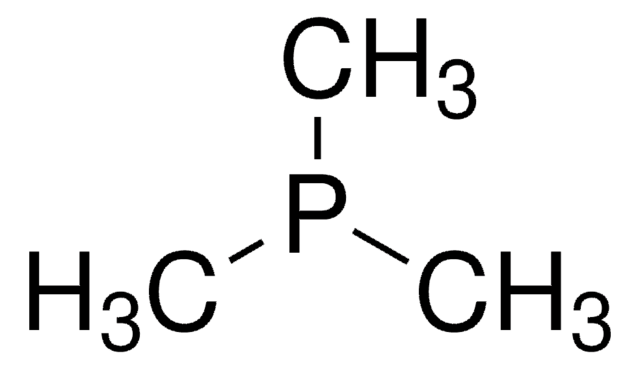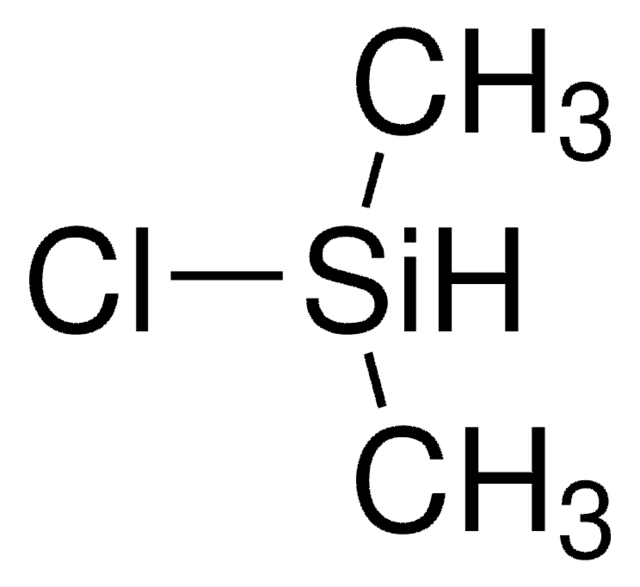175552
Trichlorosilane
99%
Sinonimo/i:
Hydrotrichlorosilane, Silicochloroform, Silicon chloride hydride, Trichloromonosilane
About This Item
Prodotti consigliati
Densità del vapore
1 (vs air)
Livello qualitativo
Tensione di vapore
9.75 psi ( 20 °C)
Saggio
99%
Forma fisica
liquid
Limite di esplosione
70 %
P. eboll.
32-34 °C (lit.)
Densità
1.342 g/mL at 25 °C (lit.)
Temperatura di conservazione
2-8°C
Stringa SMILE
Cl[SiH](Cl)Cl
InChI
1S/Cl3HSi/c1-4(2)3/h4H
ZDHXKXAHOVTTAH-UHFFFAOYSA-N
Cerchi prodotti simili? Visita Guida al confronto tra prodotti
Categorie correlate
Descrizione generale
Applicazioni
Other possible applications:
- Asymmetric reduction of N-aryl ketimines in the presence of a novel
L-valine-derived catalyst to form secondary amines.
- Hydrosilylation of imidazolinones to form chiral imidazolidinones in the presence of a 2,2′-bispyrrolidine based Lewis base organocatalyst.
- Trichlorosilane activated with chiral N-formylproline
derivatives is an effective reagent for the reduction of imines to form
enantiomerically enriched amines.
- Trichlorosilane reacts with dimethylformamide to form hypervalent hydridosilicates, which can reduce aldehydes to alcohols, imines to amines, and also for the reductive amination of aldehydes.
Avvertenze
Danger
Indicazioni di pericolo
Consigli di prudenza
Classi di pericolo
Acute Tox. 3 Inhalation - Acute Tox. 4 Oral - Eye Dam. 1 - Flam. Liq. 1 - Skin Corr. 1A - Water-react 1
Rischi supp
Codice della classe di stoccaggio
4.3 - Hazardous materials which set free flammable gases upon contact with water
Classe di pericolosità dell'acqua (WGK)
WGK 1
Punto d’infiammabilità (°F)
<-2.2 °F - Equilibrium method
Punto d’infiammabilità (°C)
< -19 °C - Equilibrium method
Dispositivi di protezione individuale
Faceshields, Gloves, Goggles
Scegli una delle versioni più recenti:
Possiedi già questo prodotto?
I documenti relativi ai prodotti acquistati recentemente sono disponibili nell’Archivio dei documenti.
I clienti hanno visto anche
Il team dei nostri ricercatori vanta grande esperienza in tutte le aree della ricerca quali Life Science, scienza dei materiali, sintesi chimica, cromatografia, discipline analitiche, ecc..
Contatta l'Assistenza Tecnica.












